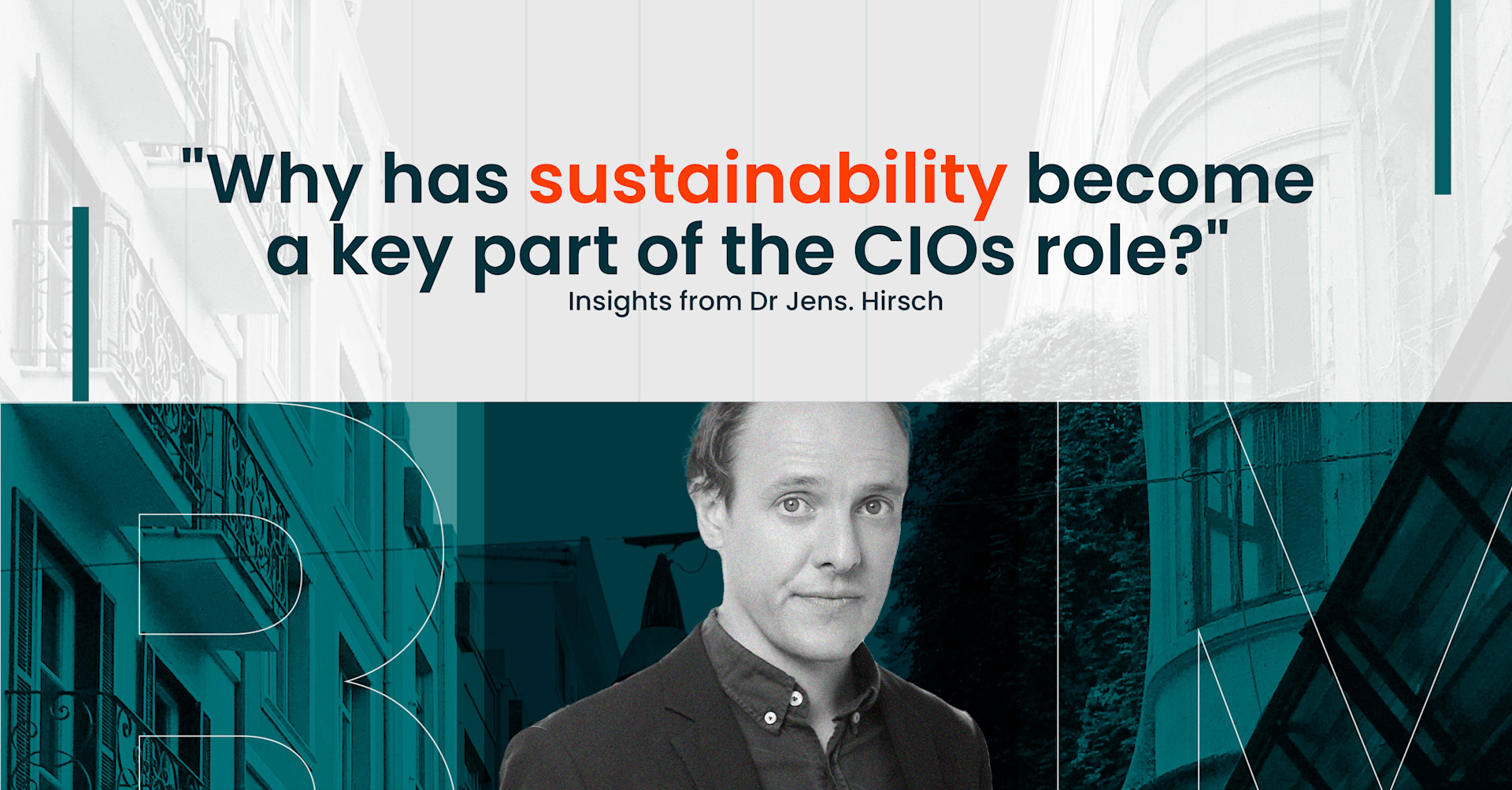Why has sustainability become a key part of the CIOs role?

Sustainability has become a key aspect of the CIO’s role due to the increasing volume and complexity of data related to environmental, social and governance (ESG) factors. The CIO must serve as an interpreter between regulatory requirements, business logic and IT, especially with the rise of regulations such as the EU’s Corporate Sustainability Reporting Directive (CSRD) and the Sustainable Finance Disclosures Regulation (SFDR).
With more and more data being generated, both in breadth and depth, the CIO must understand the intricacies of the real estate
business and the requirements of data collection, analysis and presentation of results. This expertise is essential in driving sustainability initiatives across various business functions while ensuring compliance with ESG regulations.
As sustainability data becomes a fundamental business asset, CIOs must work ESG data and tools into their technology roadmaps to achieve compliance, meet internal stakeholder demands and drive strategic planning. A robust ESG data strategy is essential for tracking progress towards sustainability goals, such as achieving net zero emissions.
One illustrative use case for this high-tech approach is tracking real estate energy data. Companies need to digitally capture vast amounts of energy consumption and CO2 emissions data to meet ESG regulatory compliance requirements and drive proactive decarbonisation strategies for large office buildings. With data being captured in intervals as short as 30 minutes to one hour from various sources like utility providers, smart meters and IoT sensors, CIOs must integrate this ESG data into their overall data strategies and ensure their IT infrastructure can accommodate it.
Furthermore, companies are employing real-time analysis of their real estate data using AI-driven decarbonisation models. These models provide accurate insights into resource management KPIs and operational carbon emissions, and integrating them into an existing IT estate falls under the CIO’s remit. Scaling AI to provide ongoing visibility into achieving net zero across a real estate portfolio is also a crucial responsibility for today’s CIOs.
In conclusion, the CIO’s role in sustainability has expanded significantly, as they must effectively navigate the complex landscape of data, technology and regulations to drive sustainability initiatives within organisations. By leveraging technology and data, CIOs can support environmental goals while delivering business value and ensuring compliance with emerging ESG regulations.
Click here to read the full article.


